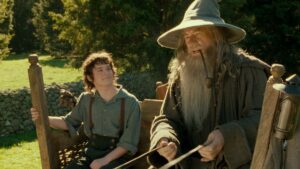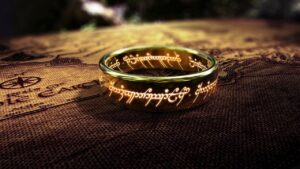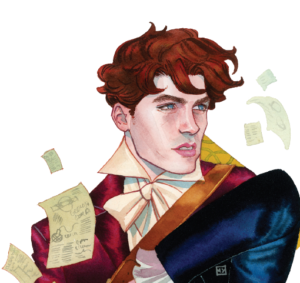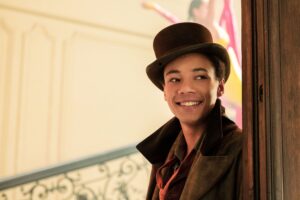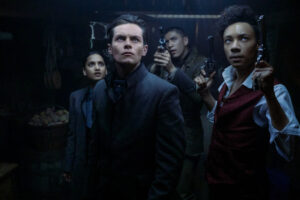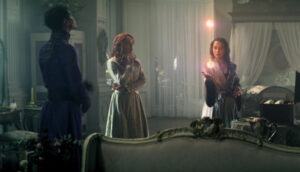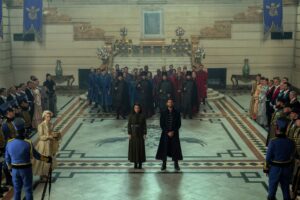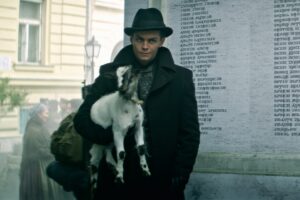Given how vast the ensemble cast of Amazon Prime’s The Lord Of The Rings already is, with thirty-nine actors officially – emphasis on officially – confirmed by Amazon to date, and seeing as the series only continues to pull in new talent, you’d think we’d be able to match some of these actors to characters at this point. But Amazon has made it pretty difficult for us: the shortage of substantial set leaks and behind-the-scenes footage or stills has forced us to rely largely on the most basic kind of guesswork: for instance, trying to find facial similarities between actors in Amazon’s cast and those in Peter Jackson’s The Lord Of The Rings trilogy.

And to be fair, that kind of guesswork might be effective. After all, Morfydd Clark bears a striking resemblance to Cate Blanchett, who originated the live-action of Galadriel which Clark will take on in Amazon’s The Lord Of The Rings (at least according to major Hollywood trades; Amazon hasn’t technically made that official yet, either). But character breakdowns and audition tapes have also been extremely helpful, probably more helpful to fans than the Hollywood trades in fact, and we’ve gotten a lot of those from places like Redanian Intelligence, The Observer, and Knight Edge Media. From these, we’ve gleaned the names (or code-names) of most of the series’ main players, and had a great time guessing which ones are established figures from the Tolkien legendarium and which are wholly original.
Today, Redanian Intelligence broke an interesting scoop pairing the character of “Kari” (I’m putting the name in quotes because it could very well be a code-name, and I know certain book-purists freak out about the names in the series not being Tolkienesque enough for them) with the actress Nazanin Boniadi, who was among the first wave of cast members to join The Lord Of The Rings in January, 2020. We still don’t know who Kari is, but I know I’ve been fascinated by her character description since I first read it – and finally being able to match a face to the name helps me visualize who she could be.
Let’s go over what we know. We first became acquainted with Kari a few months before The Lord Of The Rings started filming, back in November of 2019. At the time, The Observer had no information about the actress in the role, only that the character was “a self-sufficient single mother and village healer with a secret”. Redanian Intelligence soon afterwards disclosed two audition tapes which fleshed out Kari’s character quite a bit; revealing that she had a lover, a soldier named “Everad”, who was very clearly an outsider in her small village. In the tapes, Kari and Everad argue over politics – Everad is still distrustful of Kari’s people and calls her homeland “a disloyal place” because its people supposedly rose up in rebellion to his own at some point in the not-so-distant past, while Kari defends them with a passion and anger I instantly admired.
This reporting was backed up in January 2020 by an exclusive from Knight Edge Media, where an extensive character breakdown for Kari was revealed, elaborating on her “at times gentle, but also at times fiery” temperament, and the conflict which defines her, being “torn between her son, her own people and the man with whom she is secretly in love”. It was also mentioned that Amazon was looking for a “Diverse” actress for the role, and Boniadi – an Iranian-British actress who is currently forbidden from returning to the country of her birth due to her activism – fits that description, and would have been just within the “30-39” age range for Kari during the casting process.
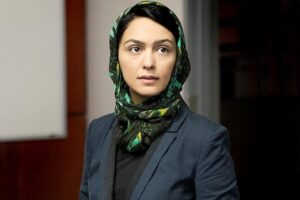
Kari’s description gave a lot of us the impression that she was probably one of the people of Middle-earth who were ruled over by the Númenóreans throughout much of the Second Age – the three-thousand, four-hundred and forty-one year period when Amazon’s The Lord Of The Rings is set. The Númenóreans conquered basically every inch of coastline in Middle-earth that wasn’t already occupied by Elves, and proceeded to desecrate the land and deplete its natural resources as they worked their way inland, building cities, ripping down entire swathes of forest to build their sea-faring ships, and generally making themselves immensely unpopular with the people who were already living in these lands…including, perhaps, our Kari.
This kind of storyline is by no means unique to Amazon’s The Lord Of The Rings, and there are ways in which it could go badly wrong if it’s handled without the sensitivity and nuance any story (particularly a romance) that deals with topics of imperialism and colonialism requires. J.R.R. Tolkien’s own writing pretty explicitly links Númenórean imperialism to their eventual downfall from pride, greed, and the lust for world domination. But this new series can go further than he ever did, by centering the perspectives of Middle-earth’s pre-Númenórean people and depicting them as complex, fully-realized characters.
I know some people will be disappointed if Boniadi is playing Kari simply because a lot of people hoped she’d be playing a Númenórean ruling queen in The Lord Of The Rings (to the point where some had drawn connections between Boniadi and another Iranian cast-member, Sophia Nomvete, and extrapolated that Númenor would have Middle Eastern or Persian design influences), so a village healer might seem like a downgrade. It’s not, I assure you. Kari already sounds fascinating from the information we can compile about the character, and I’m sure Boniadi will give a great performance.
(In passing, Redanian Intelligence also revealed that two new actors – New Zealand’s Bridie Sisson and Britain’s Robert Nairne – have also joined The Lord Of The Rings, likely in small roles. I’d like to give both of them a warm welcome to the Tolkien family!)
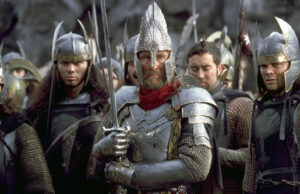
But what say you? Do you think Boniadi is playing Kari, and are you interested in this character? Share your own thoughts, theories, and opinions, in the comments below!
